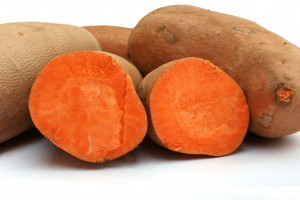Eating well is Jiu-Jitsu: Sweet potato – The good carbohydrate
What do you have in your lunch? Sweet potato with… What is your favorite pre-training snack? Sweet potato with… In your dinner? Sweet potato and… Not only one or two athletes have been in the ‘Eating Well is Jiu-Jitsu’ section and said they eat sweet potato in at least one of their meals during the day.
In any nutrition, fitness, and healthy recipes blogs there are many photos of this latest ‘everyone’s favorite’ food. The sweet potato is, literally, in the mouth of everyone. And there are good reasons for that. Today at Eating Well is Jiu-Jitsu, we will discover the real benefits brought by this kind of potato  to our health and to our training performance.
to our health and to our training performance.
Since it is a food with a low glycemic level, its energy is gradually released in our body, so it helps to increase the satiety feeling. Besides, it does not cause ‘insulin peaks’, usually generated by the simple carbohydrates. And it does not stop there.
6 Benefits of the Sweet Potato
1- Energy to the muscles: Do you have a long training? Take advantage of the sweet potato to give that extra energy to your muscles.
2- Many antioxidants: Beta-Carotene, Vitamins C and E.
3- High in Carbohydrates: They help to keep the muscles working at a high level.
 4- High nutrition, low calories: Yes, a stewed sweet potato has as few as 84 calories.
4- High nutrition, low calories: Yes, a stewed sweet potato has as few as 84 calories.
5- Burn fat and increase your lean mass/muscle mass: This happens because this food releases the glucose in your blood at a slow pace.
6- Controls Diabetes: It helps to control blood sugar due to its low glycemic level.
So, did you like it? Now you have many good reasons to add this food to your diet and to your pre-training snacks. Share this with your friends and like our page on Facebook.
*This article has only an informative purpose and is not intended to replace professional guidance. The use of vitamins and supplements can offer you great results, but before using any product, we strongly recommend you to visit a Nutritionist, Doctor, or another specialist for an analysis and follow-up.*
Note: Illustrative photos.
Research sources (in Portuguese):

